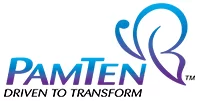With record low unemployment, and the IT sector seeing massive job openings, the time has never been better to find a job in tech. Job openings in IT doubled to 217,000 on the last day of December 2021, compared with 109,000 for the last day of December 2020, according to the US Bureau of Labor Statistics report released on February 1, 2022. This shortage, combined with inflation, is driving up salaries across the board.
The first step when thinking about starting to look for a job is to ask yourself what you really, really want to do. Spend time thinking about what projects at work bring you more energy and which ones excite you less. Look for new opportunities that are most in line with what you like to do – you may be surprised by what’s available.
Next, look at your resume and LinkedIn profile. While they may look perfect, beautifully formatted and written, your profiles work better when they are tailored to the types of roles you’re seeking. Modify your profiles using key terms that relate to your ideal job. Don’t forget – over 90% of recruiters use LinkedIn as their primary search tool, so your presence on the platform is important.
Other tips for identifying the best roles for you:
- Read job descriptions closely. Look to see if you have some key skills that match the job or are close to their requirements. How can you match your skills to their key words?
- Check out related jobs. Search engines often provide related jobs, and you should look to see if there is something that is a good fit.
- But don’t apply for jobs you know you are not interested in! Ask yourself if you’d be excited to get an interview. In a hot job market, there’s just no need to apply for unappealing jobs.
- Find out about the employer. An easy way is Glassdoor.com. Reviews generally hold elements of truth, and there can be valuable information within if you look closely.
- Be early. “If you aren’t one of the first 20 people to apply on LinkedIn, you’re probably not going to get seen,” according to J.T. O’Donnell, Founder and CEO of Work It Daily, a career coaching platform.
- Be sure your profile, cover letter, and application match the job description. This means mirroring the phrases in the listing. Often, robots screen the applications. Joseph Fuller, a management professor at Harvard Business School, believes “Being robotic is good if you’re talking to a robot.”
- Demonstrate how agile you are. Words like “transformation,” “migration,” or “upgraded,” on your resume show how you quickly picked up new skills as the job required. “What employers are looking for is agility,” said Tim Brackney, President and COO of the management consulting firm RGP. “If you can demonstrate that in your story, and pull those elements out when you’re in person, you have the best shot.”
- Set a weekly goal and meet it. You need discipline to find a job and having a weekly goal in terms of the number of applications you submit will keep you on track!
A SheTek mentor can help you understand and reframe your existing skills to help you get the tech job of your dreams. With the SheTek Tech Mentorship Program, you’ll partner with an experienced tech leader who understands career challenges and can guide you through concerns and questions. Learn more about the SheTek Tech Mentorship Program and sign up at https://bit.ly/SheTekMentor.








spam test comment
Comment *
text shetek
Set a weekly goal and meet it